耐候性試驗
Weathering Testing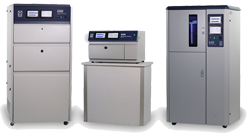
咨詢熱線
18566398802ISO 4892-1:2016
ISO 4892-1:2016標準介紹
DIN EN ISO 4892-1:2016簡介
DIN EN ISO 4892-1:2016簡稱DIN EN ISO 4892-1。
中文名:塑料.實驗室光源暴露方法.第1部分:通用指南
英文名:Plastics - Methods of exposure to laboratory light sources - Part 1: General guidance (ISO 4892-1:2016)
發布時間:2016/10/01
中國標準分類號:G31
國際標準分類號:83.080.01
發布單位:DE-DIN
引用標準:DIN EN 60584-1-2014 DIN EN 60751-2009 DIN EN ISO 291-2008 DIN EN ISO 293-2005 DIN EN ISO 294-1-1998 DIN EN ISO 294-2-2006 DIN EN ISO 294-3-2003 DIN EN ISO 295-2004 DIN EN ISO 877-1-2011 DIN EN ISO 877-2-2011 DIN EN ISO 877-3-2011 DIN EN ISO 2818-1997 DIN
被代替標準:DIN EN ISO 4892-1-2001 DIN EN ISO 4892-1-2014
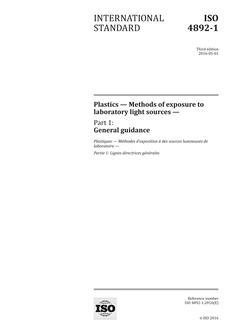
DIN EN ISO 4892-1:2016適用范圍
ISO 4892-1:2016提供了與曝光方法的選擇和操作相關的信息和一般指南,在隨后的部分中進行了詳細描述。它還描述了用于將塑料暴露于實驗室光源的裝置的一般性能要求。有關性能要求的信息適用于人工加速風化或人工加速輻照裝置的生產商。
注:在ISO 4892本部分中,術語“光源”是指發射紫外線輻射、可見光輻射、紅外輻射或這些輻射類型的任何組合的輻射源。
ISO 4892-1:2016還提供了有關人工加速風化或人工加速輻照暴露數據解釋的信息。ISO 4582中給出了有關測定塑料暴露后性能變化和報告這些結果的方法的更具體信息。
ISO 4892-1:2016 provides information and general guidance relevant to the selection and operation of the methods of exposure described in detail in subsequent parts. It also describes general performance requirements for devices used for exposing plastics to laboratory light sources. Information regarding performance requirements is for producers of artificial accelerated weathering or artificial accelerated irradiation devices.
NOTE In this part of ISO 4892, the term "light source" refers to radiation sources that emit UV radiation, visible radiation, infrared radiation or any combination of these types of radiation.
ISO 4892-1:2016 also provides information on the interpretation of data from artificial accelerated weathering or artificial accelerated irradiation exposures. More specific information about methods for determining the change in the properties of plastics after exposure and reporting these results is given in ISO 4582.
符合DIN EN ISO ISO 4892-1:2016的儀器
點擊圖片查看產品,或電話咨詢 4006808138
氙燈試驗箱:Q-SUN ;紫外老化試驗箱 QUV
ISO 4892-1:2016國際標準以“塑料—暴露于實驗室光源的方法”為總標題,由以下部分組成:
第1部分:通則;
第2部分:氙弧燈;
第3部分:熒光紫外燈;
第4部分:開放式碳弧燈,紫外光老化試驗箱。
ISO 4892-1:2016在后續部分詳細描述了和暴露操作方法的選擇有關的信息和指導。它還描述了用于將塑料暴露于實驗室光源的設備的一般性能要求。有關人工加速風化或人造加速輻射裝置生產性能要求的信息。
在ISO 4892的這一部分中,“光源”一詞是指發出紫外線輻射、可見輻射、紅外線輻射或這些輻射的任何組合的輻射源。
ISO 4892-1:2016還提供了從人工加速老化或人工加速輻射暴露數據的解釋信息。在ISO 4582中給出了關于塑料暴露后的性能變化和報告這些結果變化的方法的更具體的信息。
ISO 4892-1:2016英文簡介
ISO 4892-1:2016 provides information and general guidance relevant to the selection and operation of the methods of exposure described in detail in subsequent parts. It also describes general performance requirements for devices used for exposing plastics to laboratory light sources. Information regarding performance requirements is for producers of artificial accelerated weathering or artificial accelerated irradiation devices.
NOTE In this part of ISO 4892, the term "light source" refers to radiation sources that emit UV radiation, visible radiation, infrared radiation or any combination of these types of radiation.
ISO 4892-1:2016 also provides information on the interpretation of data from artificial accelerated weathering or artificial accelerated irradiation exposures. More specific information about methods for determining the change in the properties of plastics after exposure and reporting these results is given in ISO 4582.
1 Scope
This part of ISO 4892 provides information and general guidance relevant to the selection and operation of the methods of exposure described in detail in subsequent parts. It also describes general performance requirements for devices used for exposing plastics to laboratory light sources. Information regarding performance requirements is for producers of artificial accelerated weathering or artificial accelerated irradiation devices.
NOTE In this part of ISO 4892, the term “light source” refers to radiation sources that emit UV radiation, visible radiation, infrared radiation or any combination of these types of radiation.
This part of ISO 4892 also provides information on the interpretation of data from artificial accelerated weathering or artificial accelerated irradiation exposures. More specific information about methods for determining the change in the properties of plastics after exposure and reporting these results is given in ISO 4582.
2 Normative references
The following documents, in whole or in part, are normatively referenced in this document and are indispensable for its application. For dated references, only the edition cited applies. For undated references, the latest edition of the referenced document (including any amendments) applies.
ISO 291, Plastics — Standard atmospheres for conditioning and testing
ISO 293, Plastics — Compression moulding of test specimens of thermoplastic materials
ISO 294-1, Plastics — Injection moulding of test specimens of thermoplastic materials — Part 1: General principles, and moulding of multipurpose and bar test specimens
ISO 294-2, Plastics — Injection moulding of test specimens of thermoplastic materials — Part 2: Small tensile bars
ISO 294-3, Plastics — Injection moulding of test specimens of thermoplastic materials — Part 3: Small plates
ISO 295, Plastics — Compression moulding of test specimens of thermosetting materials
ISO 2818, Plastics — Preparation of test specimens by machining
ISO 3167, Plastics — Multipurpose test specimens
ISO 4582, Plastics — Determination of changes in colour and variations in properties after exposure to daylight under glass, natural weathering or laboratory light sources
ISO 4892-2, Plastics — Methods of exposure to laboratory light sources — Part 2: Xenon-arc lamps
ISO 4892-3, Plastics — Methods of exposure to laboratory light sources — Part 3: Fluorescent UV lamps
ISO 4892-4, Plastics — Methods of exposure to laboratory light sources — Part 4: Open-flame carbon-arc lamps
ISO 9370, Plastics — Instrumental determination of radiant exposure in weathering tests — General guidance and basic test method
3 Terms and definitions
For the purposes of this document, the following terms and definitions apply.
NOTE Definitions of other terms that are related to weathering tests are found in Reference [2].
3.1control
material which is of similar composition and construction to the test material and which is exposed at the same time for comparison with the test material
Note 1 to entry: An example of the use of a control material would be when a formulation different from one currently being used is being evaluated. In that case, the control would be the plastic made with the original formulation.
3.2file specimen
portion of the material to be tested which is stored under conditions in which it is stable and which is used for comparison between the exposed and unexposed states
3.3artificial accelerated weathering
exposure of a material in a laboratory weathering device to conditions which may be cyclic and intensified compared with those encountered in outdoor or in-service exposure
Note 1 to entry: This involves a laboratory radiation source, heat and moisture (in the form of relative humidity and/or water spray, condensation or immersion) in an attempt to produce more rapidly the same changes that occur in outdoor exposure.
Note 2 to entry: The device may include means for control and/or monitoring of the light source and other weathering parameters. It may also include exposure to special conditions, such as acid spray to simulate the effect of industrial gases.
3.4artificial accelerated irradiation
exposure of a material to a laboratory radiation source intended to simulate window-glass-filtered solar radiation or radiation from interior lighting sources and where specimens may be subjected to relatively small changes in temperature and relative humidity in an attempt to produce more rapidly the same changes that occur when the material is used in an indoor environment
Note 1 to entry: These exposures are commonly referred to as fading or lightfastness tests.
3.5reference material
material of known performance
3.6reference specimen
portion of the reference material that is to be exposed
溫馨提醒:本ISO 4892-1:2016可能存在更新的版本,建議尋找ISO 4892-1:2016的發行商確認。
符合 ISO 4892-1:2016 標準的
老化試驗箱
-
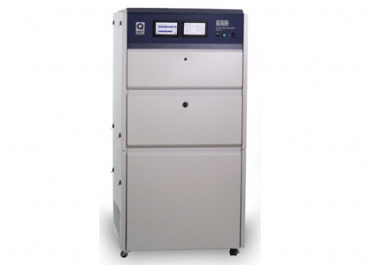
 氙弧燈老化試驗箱
氙弧燈老化試驗箱
Q-SUN Xe-3氙弧燈老化試驗箱具有真實的光譜輸出環境以及廣泛的標準適用范圍。
Q-SUN Xe-3 馬上詢價 -
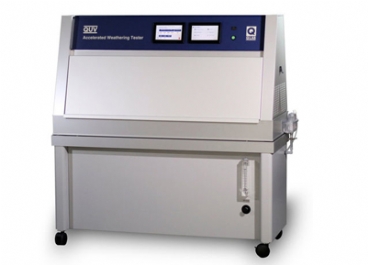
 紫外線加速老化箱
紫外線加速老化箱
QUV/se紫外線加速老化箱是Q-lab紫外加速老化設備中最受市場歡迎的型號,具有輻照度校準功能以及凝露功能。
QUV/se 馬上詢價 -
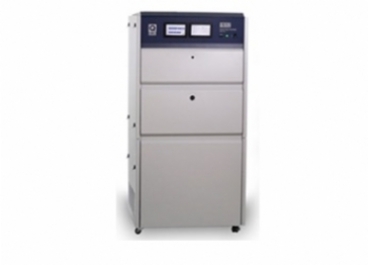
 太陽光老化試驗箱
太陽光老化試驗箱
Q-SUN Xe-3-HBSE是一款支持背部噴淋的氙燈老化試驗箱,可將水同時噴灑在樣品的正面和背面。
Q-sun Xe-3-HBSE 馬上詢價 -

 紫外線老化箱
紫外線老化箱
QUV是美國Q-lab公司的注冊商標,也是Q-lab公司紫外加速老化設備的統稱,包含QUV/basic、QUV/se、QUV/spary、QUV/cw四個不同型號的產品。
QUV 馬上詢價 -

 氙燈加速老化箱
氙燈加速老化箱
Q-SUN Xe-3-HE氙燈加速老化箱是一款經濟的氙燈加速老化箱,具備有濕度控制功能,但是該型號的產品不具備水噴淋功能。
Q-SUN Xe-3-HE 馬上詢價

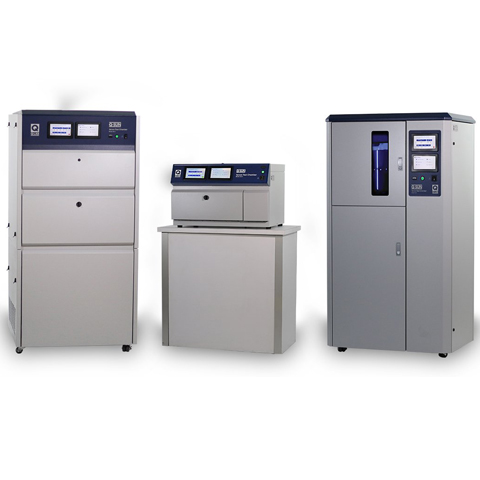
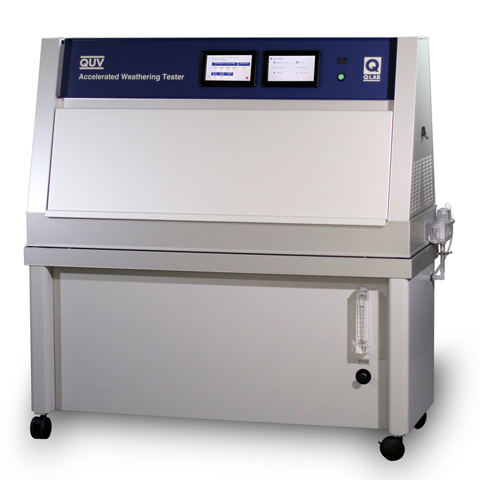
 粵公網安備 44060402000067號
粵公網安備 44060402000067號